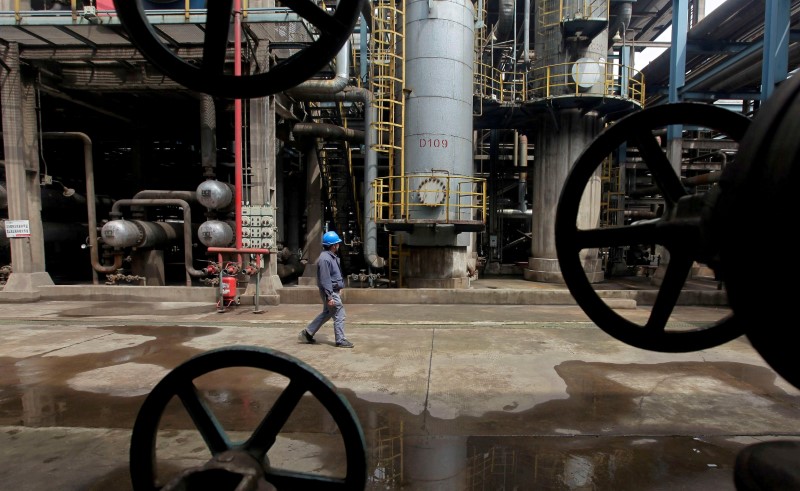By Henning Gloystein
SINGAPORE (Reuters) - Oil markets rose more than 1 percent on Monday, pushed up by tensions in the Middle East where top crude exporter Saudi Arabia and other Arab states cut off ties with Qatar, and as signs of falling OPEC supplies tightened the market.
Saudi Arabia as well as the United Arab Emirates, Egypt, and Bahrain cut ties with top liquefied natural gas (LNG) and condensate shipper Qatar on Monday, accusing it of supporting extremism and undermining regional stability.
Brent crude oil futures rose 70 cents, or 1.4 percent, to $50.65 per barrel by 0345 GMT.
U.S. West Texas Intermediate futures were at $48.34 a barrel, up 68 cents, or 1.4 percent.
Traders said that prices had also received support from a tightening physical crude market.
Saudi Aramco raised July prices for its Arab Light grade to all major regions of Asia, Northwest Europe, and the United States on Sunday.
The price signal reflected other signs that an effort led by the Organization of the Petroleum Exporting Countries (OPEC) to curb production by almost 1.8 million barrels per day (bpd) was starting to impact actual supplies.
Shipping data in Thomson Reuters Eikon shows that OPEC tanker supplies to customers around the world were at 24.3 million bpd in May, down from 24.8 million bpd in April and compared with an average of 25.1 million bpd in the first five months of the year.
OPEC shipped an average of 26.4 million bpd in the last three months of 2016.
Despite this, Brent futures are still nearly 8 percent below their level on May 25, when OPEC announced it would extend its production cut into 2018.
That's because crude production in the United States, which is not participating in the cuts, has jumped by over 10 percent since mid-2016 to 9.34 million bpd, close to levels by top producers Saudi Arabia and Russia.
"Investors continue to doubt the ability of OPEC to rebalance the oil market, with crude oil prices remaining under pressure amid further signs of rising U.S. oil production," ANZ bank said on Monday.
The rise in U.S. production has been driven by a record 20th straight rise in oil drilling for new production, with the rig count rising by 11 in the week to June 2, to 733, the most since April 2015.
